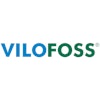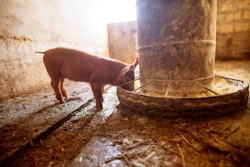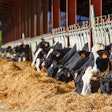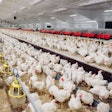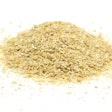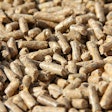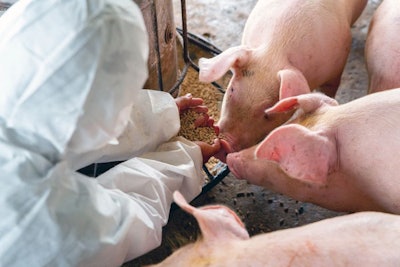
Find out what dietary measures are effective in fighting this condition
I recently had the unpleasant luck to deal with a (perhaps) nutritionally induced edema disease outbreak, and I thought I would update this older article of mine, here as a quick blog.
Edema disease does not have a definitive cause. It is still believed to be triggered by certain serotypes of Escherichia coli bacteria. Major symptoms include disorders of the nervous system, puffy eyelids, diarrheas, lameness, loss of appetite, depressed performance, unthrifty overall condition and mortality. The puffy eyelids is what made us believe this was the case in the recent outbreak that resulted in the loss of a few good animals.
Dietary measures effective against colibacteria are usually also effective against the serotypes causing edema disease, and here is the list I have been following:
-
Zinc and copper
Edema disease is more prevalent in areas of the world where antibiotics are restricted. Thus, where allowed, zinc oxide is considered a good supplement against edema disease. Also, copper sulfate is also beneficial against bacterial infections. Lamentably, in our case, we cannot use any of the above at sufficient concentrations due to EU regulations.
-
Dietary protein
Most pathogenic bacteria, including E. coli, thrive on excess protein, so it makes sense to offer them less of a substrate to proliferate. To the same effect, increasing dietary protein digestibility also reduces undigested protein reaching the hind gut.
-
Protein meals
Reducing or removing normal protein/oil meals from piglet diets greatly reduces the incidence of gastrointestinal disorders, including edema disease. But this is a function of the lower-protein/digestibility effects mentioned above. However, this is not the solution, just a remedy.
-
Organic acids
Certain organic acids are also quite helpful against bacteria as they tend to create an environment unsuitable for their growth throughout the gastrointestinal tract, and especially in the stomach.
-
Coarse feed
The use of coarsely ground cereals has been shown to increase overall health of the digestive tract in cases of severe bacterial infections. In addition, feed in meal form is preferable to pelleted feed when pigs are known to suffer from enteric diseases.
-
Fiber
Based on empirical evidence, increasing dietary fiber has been shown to help against many types of bacterial infections. To increase dietary fiber, barley and oats, coarsely ground, are quite effective while being more nutritive than other sources of fiber.
-
Immunoglobulins
Regardless of their source, if they can neutralize the bacteria responsible for this disease, then their inclusion is justified despite the high cost. There is considerable evidence that this might be a sound solution if the right product is used.

